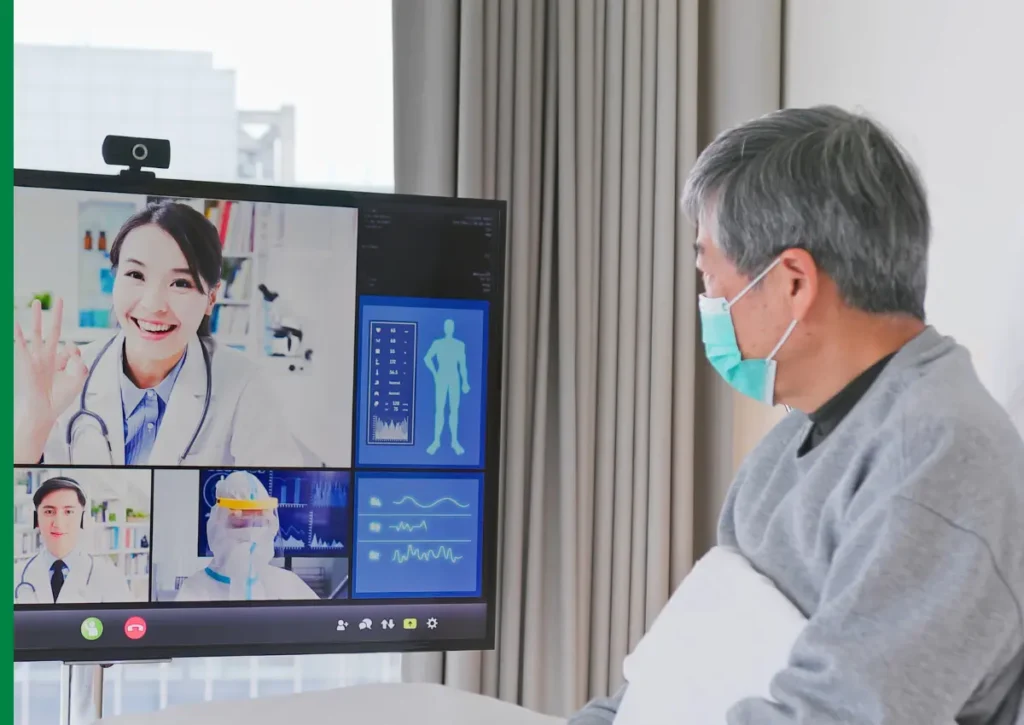The healthcare sector has transformed dramatically, and telemedicine has become a part of the foundation of the latest medical practices. With the digital technology getting interconnected into all our daily activities, understanding what telemedicine can and cannot do has now become crucial to healthcare professionals as well as patients.
All those hoping to receive high-quality medical care without going anywhere would want to know how telemedicine works and what the advantages and weak sides of the system are in order to make informed decisions and actually have a patient-centered experience of receiving medical care.

What is Telemedicine?
Telemedicine is the symbol of the seamless integration of technology and health care and it helps skilled and competent medical professionals to pass on health care to patients at a distance with the use of multiple channels of technology. Using such tools as video calls, secure messaging services, digital imaging transfer, and remote patient supervision, telemedicine can provide the recently developed alternative to traditional face-to-face visits.
As compared to the traditional face-to-face appointments, patients can use telemedicine to seek medical consultation, diagnosis, and explanation of treatment procedures all by being at home or any other location with internet access. As it is an innovative solution, this solution has been particularly useful in regular check-ups, continuous disease management, care, and easy follow-ups, so the best healthcare facility should always be accessible to humanity.
Benefits of Telemedicine in Healthcare
1. Enhanced Cost-Effectiveness and Accessibility
Telemedicine saves a lot of money in healthcare costs on the part of the patient and the provider. Patients will save the money and time spent on transportation and finding and paying fees to park, as well as the working time outside the workplace, whereas medical facilities will be able to allocate the resources they have more efficiently.
Telemedicine can be used to provide a less expensive alternative to the normal office visit in minor cases of health, such as skin rashes, colds, or even refills.
This cost factor creates more affordable healthcare, making it more accessible to underserved populations, e.g., healthcare to the rural population and those with low financial ability.
2. Chronic Disease Monitoring and Real-Time Health Monitoring
The broadcasting of constant health monitoring is one of the most effective telemedicine uses. Supportive remote monitoring technology has the capacity to monitor vital signs and medicine compliance as well as symptom changes in real-time, which is especially helpful to patients with chronic illnesses like:
- Diabetes mellitus
- Hypertension
- Cardiovascular disease
- Chronic obstruction of pulmonary disease (COPD)
- Mental health problems
Medical workers will be able to get a timely signal regarding changes in the condition of a person in treatment, which is critical so that the problem can be corrected on time, or death may be avoided.

3. Improved Access to Specialist Care
Telemedicine eliminates geographical distances, since it transports patients to specialists irrespective of their location. This is particularly important to individuals in underrepresented or rural areas, where they cannot easily find specialized care locally. Patients can give their expert opinions and have a timely avenue to specialized services without having to travel long distances; also, the wait time is decreased and better health outcomes are achieved through remote consultations.
4. Enhanced Mental Health Services
The COVID-19 pandemic highlighted telemedicine as the critical means of ensuring continuity of mental health care. Telepsychiatry and remote counseling services were very productive in the treatment of depression, anxiety, PTSD, substance use disorder, and other behavioral issues. Getting mental support at home can create more privacy and an open and mutually satisfying communication between the patient and the provider.
5. Superior Elderly Care and Assisted Living Support
In the case of old adults, the telemedicine practice has been able to reinvent care by providing 24-hour availability of the healthcare personnel. The development is of more value to people in assisted living facilities who require support at odd times, older adults with mobility issues, and nurses handling several health issues. With the help of timely intervention, telemedicine prevents unreasonable visits of the elderly to the emergency room and generally improves the elderly situation.
Application of Telemedicine in Healthcare industry
Telemedicine has seen numerous uses in the health sector and grossly transformed the relationship between patients and service providers. Example is radiology, where teleradiology enables medical experts to read medical images at remote locations, therefore saving time in the diagnosis process and also providing expert opinion irrespective of geographical location.
Because of such an approach, the diagnosis of life-threatening conditions can be carried out faster and, at the same time, it enables the coverage of radiology services 24 hours a day, minimizing patient wait times and maximizing patient outcomes.
- To manage chronic diseases, there is a possibility to use telemedicine platforms connected to electronic health records so that the condition can be monitored continuously and consultations can be held on a regular basis. Patients with a history of diseases like cardiovascular disease or diabetes can take advantage of real-time health access, medicine reminders, and coordination between several specialists, with no regular face-to-face visits.
- The facility of telemedicine has made sleep medicine more available as well. Patients will be able to do a sleep study in an in-home setting and be remotely monitored, have virtual consultations about their sleep problems, and track the therapy device and make adjustments remotely, so further care of such complaints as sleep apnea will be much easier.
- Another field changed with the help of telemedicine is medication management. High-tech systems monitor such parameters as relationship to prescription, send text reminders, and facilitate safe electronic prescription, as well as assist in tracking possible drug interactions. This does not only enhance patient compliance but also eases the process of refills and adjustment of medications making treatment safer and more effective.
- Altogether, the multifunctional character of telemedicine, encompassing remote imaging and chronic disease management, sleep diagnostics and medication management, can serve as evidence of its increasing role in contemporary healthcare.
Know the Challenges of telemedicine in healthcare
Data Security and Privacy Concerns
The issue of healthcare data security is the main question regarding telemedicine, and healthcare providers should do everything possible to secure the information about their patients at all steps of digital communication. To do so, healthcare organizations should adhere to the rules introduced by HIPAA, according to which video consultations and the transfer of electronic information should be conducted using encrypted and secure systems.
Any electronic health records must be kept under secured environments and security audits should be conducted time and again so as to detect the vulnerabilities, thus ensuring that the weak areas are dealt with.
Technology Limitations and Digital Divide
Telemedicine may result in a healthcare access divide since not all patients would have equal access to the technology required to implement telemedicine. These obstacles are also attributed to factors like lack of internet connectivity in rural setups, the absence of relevant devices like computers, smartphones, etc.
Low digital literacy levels in older generations and language barriers within the digital realms. It is essential to interfere with these concerns as well so that the benefits of telemedicine could be fully enjoyed by all people in any place and belonging to different backgrounds.
Regulation and Licensure Issue
Telemedicine is subject to a variety of rules and regulations, such as state-by-state regulatory rules governing the practice of healthcare practitioners, cross-state-line regulatory rules, prescription authority, and insurance coverage and reimbursement disparities. Quality care and adherence to standard protocols are also major factors of compliance.
Clinical Limitations
Though telemedicine serves most of the issues related to health care, there are still situations requiring face-to-face treatment. These are physical checks that can only be assessed through hands and also emergency cases, complicated diagnostic procedures and surgical consultations or procedures that require direct contact.
Final thoughts
Telemedicine is changing healthcare by making the healthcare sector more available, efficient, and patient-centered. It is more beneficial than harmful, as it speaks about reduced expenses, elevated chronic care levels, enhanced support of mental conditions, etc. With the emerging technologies and laws, telemedicine will form an inevitable component of current healthcare.
It is time to jump in and experience this digital transformation as providers and patients to make a more networked, convenient, and inclusive health system.



